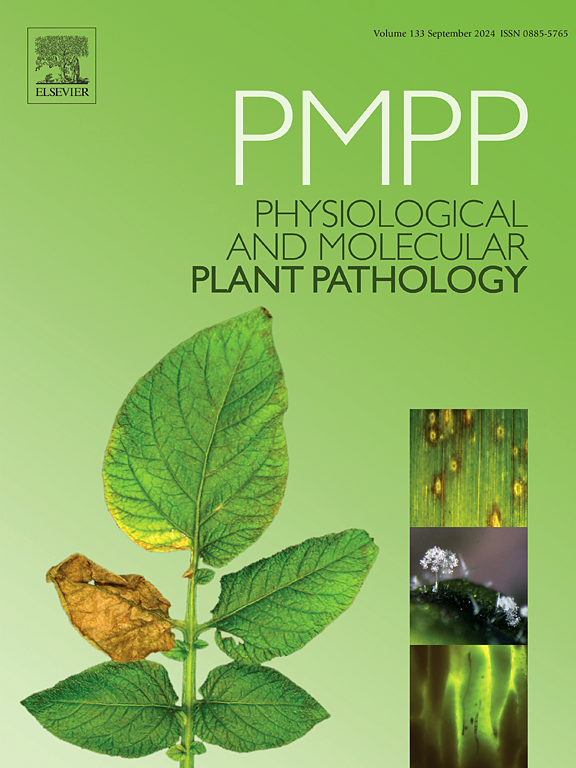Proteomic analysis of the Papaya-Fusarium equiseti interaction: Understanding mode of infection and plant response at the molecular level
IF 2.8
3区 农林科学
Q2 PLANT SCIENCES
引用次数: 0
Abstract
Papaya (Carica papaya L.) is an important tropical fruit with significant nutritional and economic value. However, postharvest diseases, particularly caused by Fusarium equiseti, result in severe quality losses. This study aims to elucidate the molecular mechanisms underlying papaya's response to F. equiseti infection using a proteomic approach. Papaya fruits were divided into control and Fusarium-challenged groups. Proteins were extracted from both groups and analyzed through two-dimensional gel electrophoresis (2-DE) followed by MALDI-ToF/ToF MS/MS for protein identification. Differentially expressed proteins were identified and mapped using protein-protein interaction networks. A total of 1250 protein spots were detected, with 8 significantly altered between the control and infected fruits successfully identified. Key upregulated proteins included Linoleate 9S-lipoxygenase, involved in lipid metabolism, and 30S Ribosomal Protein S3, associated with protein synthesis. Conversely, proteins like the stromal Heat Shock-Related Protein were downregulated, suggesting compromised stress responses during infection. These results provide a glimpse into the intricate defence mechanisms in papaya, revealing extensive changes primarily at the translational level involving stimulation of lipid metabolism and increased ribosomal activity to combat Fusarium infection. It gives insight into probable molecular targets for the intensification of disease resistance in papaya. Further investigations are recommended to elucidate the different contributions of these proteins and then enhance management strategies for postharvest diseases.
求助全文
约1分钟内获得全文
求助全文
来源期刊
CiteScore
4.30
自引率
7.40%
发文量
130
审稿时长
38 days
期刊介绍:
Physiological and Molecular Plant Pathology provides an International forum for original research papers, reviews, and commentaries on all aspects of the molecular biology, biochemistry, physiology, histology and cytology, genetics and evolution of plant-microbe interactions.
Papers on all kinds of infective pathogen, including viruses, prokaryotes, fungi, and nematodes, as well as mutualistic organisms such as Rhizobium and mycorrhyzal fungi, are acceptable as long as they have a bearing on the interaction between pathogen and plant.

 求助内容:
求助内容: 应助结果提醒方式:
应助结果提醒方式:


